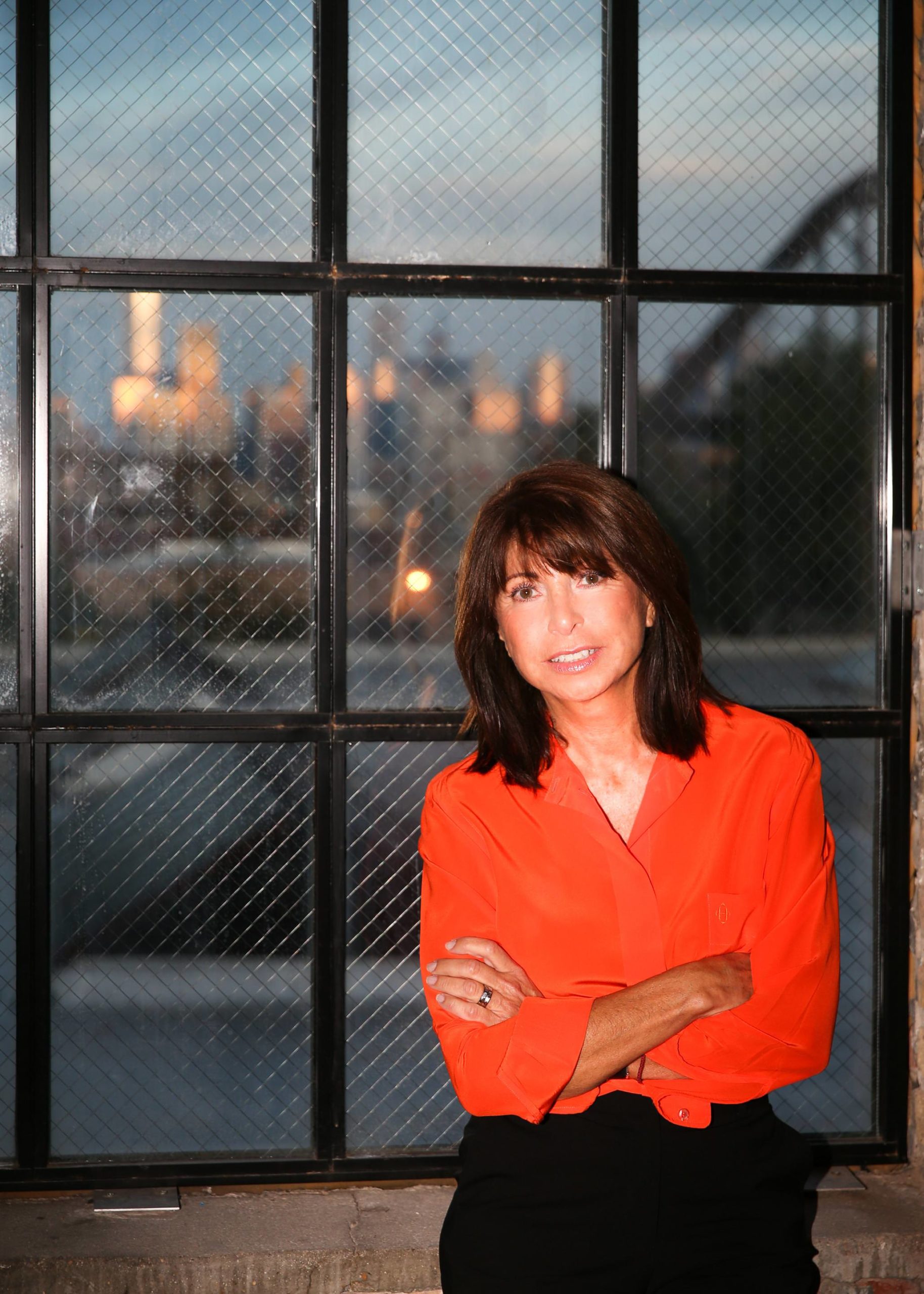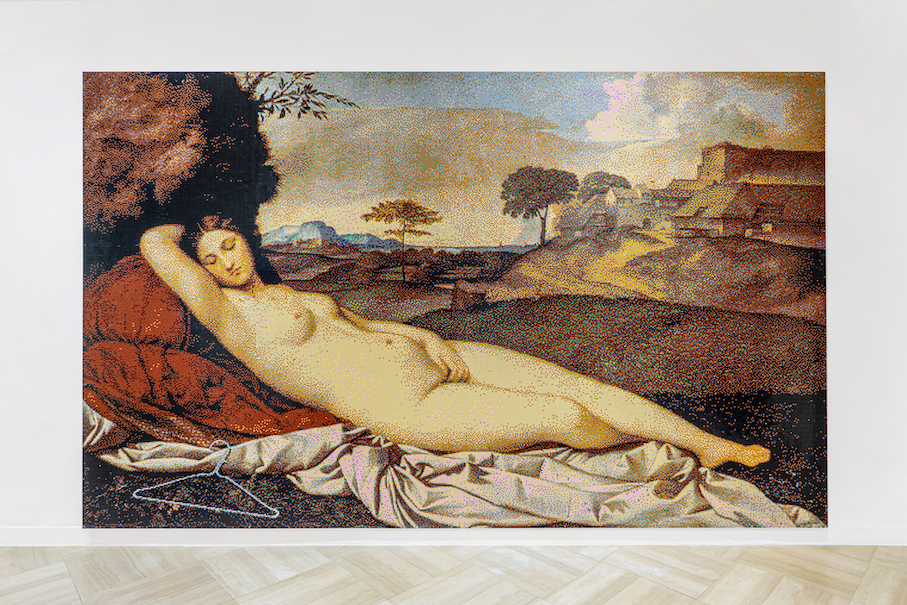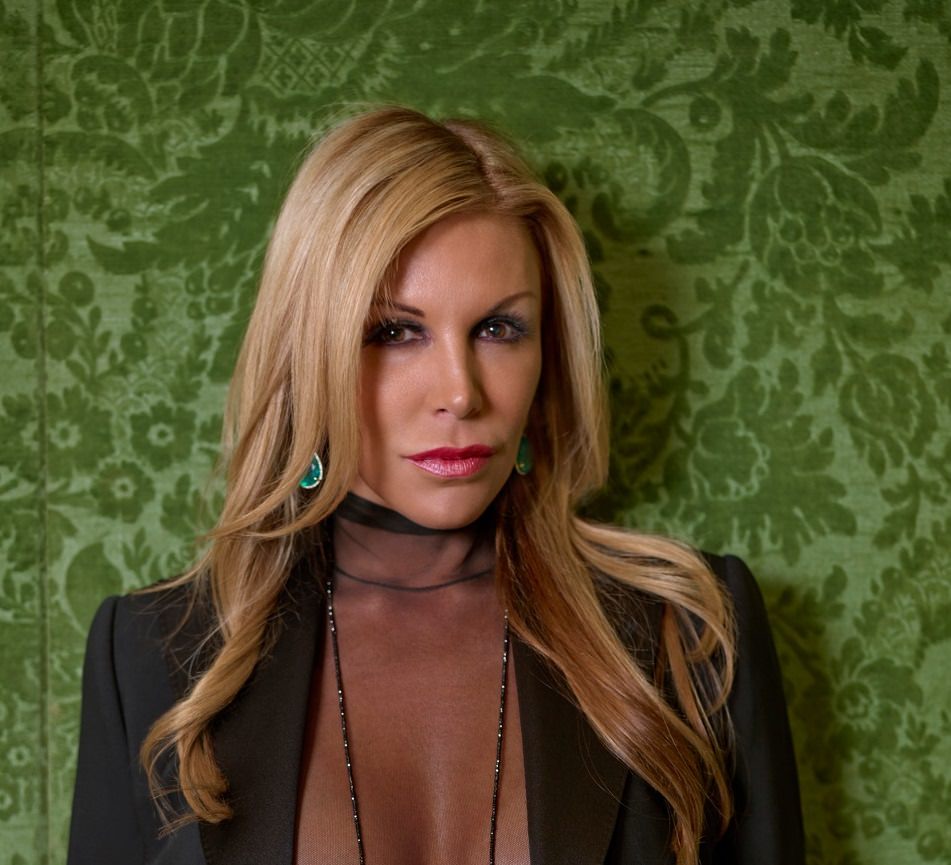Véronique Nichanian sat down with Whitewall the day before a special event for clients in Chicago, Le MANifesta d’Hermès. Taking place at the MCA Warehouse in Chicago, the special soiree showed off the brand’s Men’s Universe, which includes ready-to-wear, shoes, accessories, leather goods, and of course, scarves, all headed by Nichanian.
Nichanian has been with the brand for 27 years and tells us she’s as happy now as she was on her first day. She’s still one of the only women designing for men (which she brushes off as the norm in the unequal field of fashion), its rigorous tailoring and need for attention to small details having always suited her personality. After telling us about her visit to the Chicago Institute of Art earlier in the week (saying it was one of the most beautiful she had seen in her life), Nichanian chatted with us about how she sees herself as the conductor of the Hermès Men’s Universe orchestra.
 Veronique Nichanian
Veronique Nichanian
WHITEWALL: The MANifesta d’Hermès event in Chicago celebrates the men’s Fall/Winter 2015–2016 collection. Was there a particular theme for this season?
VÉRONIQUE NICHANIAN: There is a theme of coloration and as always a continuation of my work in material and research in details. I try to find innovation each season. So this season it was printing on calfskin. I love modern art, and I discovered an Irish artist named Richard Gorman, and he designed a scarf for us. I fell in love with his art, and I asked him if I could change the coloration, use it to print on cotton, silk, and calfskin. He came to the show and was very happy. He even said it gave him some ideas for the coloration in his work.
WW: This was the first time you printed on calfskin in this way? What exactly is the technique?
VN: It’s a silk-screening technique. It’s very difficult because with the hair on the calfskin, it’s difficult to have a precise image, especially with the dark coloration of the collection. It took four months to get it just right. It was a long elaboration because I do love precise work, and it was not so easy to get exactly what I wanted.
WW: What were the colors and materials you focused on for this season?
VN: For colors it was dark navy, purple, dark green, and there was a lot of lambskin for sure, reversible things, cashmere, cotton, and I reintroduced the Prince of Wales for the suit in double-breast and very classic shapes.
WW: You’ve previously said that the way one can innovate in the luxury industry is through innovation in material. Has that always been something that interested you?
VN: It’s been the thread of my work since the beginning, the innovation and research of material, and working on the lightness of the clothes. This is a very modern way for me, the lightness of the clothes. We travel a lot, we move a lot, so it’s important to have nice clothes, with good shape, that are very light. We are very versatile in our lives. During the day, during the night, we have different needs. I like the idea that your clothes follow your life in each situation.
WW: You’ve been with Hermès for over twenty-five years—
VN: Yes! Twenty-seven years, and I’m very proud of that because it’s twenty-seven years of freedom and passion and happiness.
WW: And having interviewed your colleagues like Bali Barett (the head of Women’s Universe) and Pierre Hardy (shoe design TK), they’ve been at the house for a long time as well. Which is not so common in fashion or luxury.
VN: We feel so happy! The house is happy with us and we are happy in the house. It’s like a friendship; we are like a family. We have lunch together. We like each other, we are working in the same direction, we collaborate a lot. Since the beginning, we have had a lot of respect for each other. We are all doing our best, all working toward the same goal. It’s not like each season we change the company. It’s a strong value and I’m still as happy as the first day, really.
WW: How would you describe your role as the head of Men’s Universe, a term that feels fairly singular to Hermès, overseeing ready-to-wear, accessories, et cetera?
VN: Since the beginning of Hermès there has been a masculine and feminine collection. I think people forget a lot of the masculinity of Hermès. When Pierre-Alexis Dumas asked me six years ago to be in charge of not only the men’s collection, the clothes, but to be in charge of the whole Men’s Universe, I thought it was very interesting to use that kind of global term. It’s the whole world of men’s at Hermès. And so I’m working like the conductor in a big orchestra. I’m working with a big team. I’m designing the clothes. I’m working with Pierre Hardy for the shoes—all the different people in order to have a harmony and cohesive vision.
WW: What initially interested you in fashion, and in men’s fashion, in particular?
VN: Since the beginning it was the fabrics, the colors, the sensuality. I found that the work in designing for men is very precise and very demanding and it really fits with my character because I’m much more somebody who likes to take care of the small details, than someone who works for the runway.
WW: A lot has been written about how are you are still one of the only women designing for men.
VN: I think I am the only one, doing only men’s. Some women design men’s and women’s. But I’m surprised that people are still surprised, because it’s a long history of so many men designing for women . . . it’s the same story of inequality between men and women.
But I do think men and women are living the same way. We are traveling; we are working. It’s just a question of sensibility to be a man or woman. And it’s about how you express your sensibility in terms of clothes.
WW: You’re also known for making small details that only the person wearing the clothes will know about. Why do you do that?
VN: Because for me luxury is just that. It’s not about the logo or talking about money; it’s talking about the refinement of the fabrics, of the details, and of the person who wears the clothes. I’m talking to him; I’m not talking to everybody. I’m just talking to this man.
WW: You mentioned the Irish artist Richard Gormon. What other artists have you collaborated with?
VN: I do like to collaborate, but it’s more like in life, when you meet people and you want to collaborate; it’s not habitude. I worked before with the artist Erwin Wurm. I wanted to work with him, we went to see him, and proposed doing something with the collection. I gave him the collection and said he had carte blanche. So he made one-minute sculpture photographs and vêtement objets with the clothes, sculpture with the clothes. He’s very demanding, too! I love to work with demanding people. [Laughs] So we became good friends, and he was also a model for me when we did a show in Paris. And Leandro Elrich, I saw his work at the Venice Biennale one year, and we did this fantastic event in Miami in 2013. Oh, and I just fell in love with an artist at this year’s Venice Biennale, but I can’t tell you his name because I don’t know what we’ll do, but I do love his work. We’ll see . . .
WW: When you’re collaborating with artists and seeing art around the world like at the Venice Biennale, does that come from a personal interest or do you see it as part of your role at Hermès?
VN: Both. Hermès is a way to propose them to come and to share our worlds and to participate.
WW: Do you collect art?
VN: I do, a few things. It depends. I have a beautiful sculpture from Erwin Wurm, for instance. And Leandro Elrich made a beautiful shirt in porcelain that we have. I collect from other artists whose work is in my house.
WW: Where are you off to next?
VN: I plan to go to Miami in November for the opening of the boutique in the Design District, and we are reopening a big store in Moscow in December. I love traveling because I love discovering cities, architecture, and people. But sometimes I do have to be in my studio to work.
This article is published in Whitewall‘s winter 2016 Lifestyle Issue.











